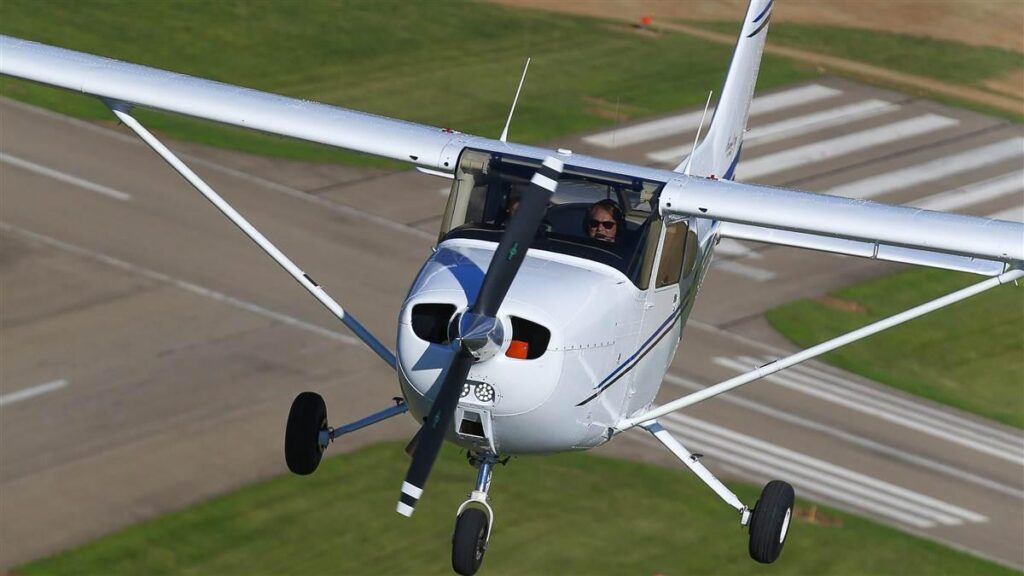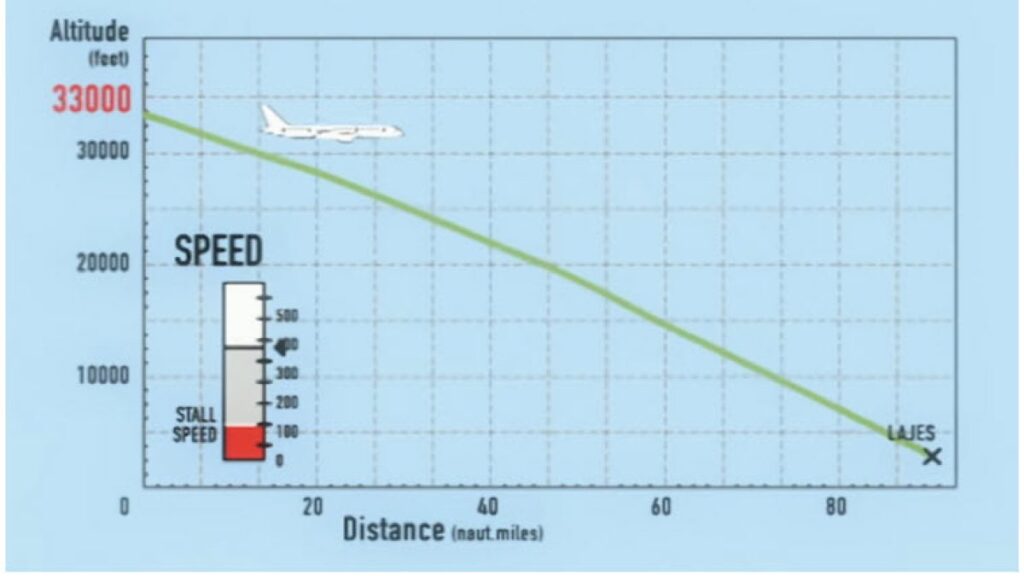The moment every passenger dreads: the engines go quiet. Maybe it’s a bird strike, fuel exhaustion, or mechanical failure. Panic sets in as you imagine the plane tumbling from the sky like a brick. But here’s what might surprise you—airplanes are actually designed to fly without engines, and they do it remarkably well.
The physics behind this seeming impossibility isn’t just fascinating—it’s the reason why engine failures rarely result in crashes. Understanding how planes become giant gliders might just change how you feel about flying forever.
The Secret: Airplanes Are Already Gliders
Every airplane, from a tiny Cessna to a massive Boeing 747, is fundamentally a glider with engines attached. The wings don’t need engine power to create lift—they just need to move through the air at the right speed and angle. When engines fail, the plane doesn’t stop flying; it simply transitions from powered flight to gliding flight.
The higher the lift-to-drag ratio (L/D), the lower the glide angle, and the greater the distance that a glider can travel across the ground for a given change in height. Commercial airliners typically have excellent L/D ratios, meaning they can glide surprisingly far and efficiently.

The Magic Number: Glide Ratio
Here’s where the math gets impressive. Most commercial airliners have a glide ratio between 15:1 and 20:1. This means that for every 1,000 feet of altitude, the plane can glide forward 15,000 to 20,000 feet—that’s nearly 4 miles horizontally for every 1,000 feet of height lost.
A Boeing 747 cruising at 35,000 feet could theoretically glide about 100 miles without engines. An Airbus A320 at the same altitude could glide roughly 75 miles. These aren’t theoretical numbers—they’re proven in real-world emergencies.
When Physics Meets Reality: Famous Engine-Out Landings
The Gimli Glider (1983): Air Canada Flight 143 was flying over Red Lake, Ontario at 41,000 feet when the aircraft’s cockpit warning system sounded, indicating a fuel-pressure problem, which led to complete fuel exhaustion. The Boeing 767 runs out of gas and lands under no power in Gimli, Manitoba, successfully completing a 17-minute, 100-mile glide to a safe landing at an abandoned airstrip.
The Miracle on the Hudson (2009): Captain Chelsey “Sully” Sullenberger and his crew safely guided US Airways Flight 1549 to a water landing on the Hudson River after a bird strike by a flock of Canadian geese shut down the jet’s engines just after takeoff. With no airports within gliding distance, the crew executed a perfect water landing, saving all 155 people aboard.
The Azores Glider (2001): Air Transat Flight 236 lost all engine power while flying over the Atlantic Ocean on August 24, 2001. The Airbus A330 ran out of fuel because of a fuel leak caused by improper maintenance. The pilots glided the aircraft for 19 minutes over 75 miles to make an emergency landing in the Azores, with all 306 people surviving.

The Physics of Staying Airborne
When engines fail, the fundamental forces of flight don’t disappear—they just rebalance. Here’s what happens:
1. Gravity Takes Over as the Engine When the engines become inoperative, the drag component is no longer balanced, and the aircraft begins to decelerate. To harmonize things and bring balance back to the forces, the aircraft’s nose must be lowered. The plane uses its altitude as potential energy, converting height into forward motion through gravity.
2. The Wing Still Works As long as air flows over the wings at sufficient speed, lift continues to be generated. The plane doesn’t need engines to maintain this airflow—gravity provides the necessary motion through the air.
3. Speed Control Through Angle Pilots control their gliding speed by adjusting the nose angle. Lower the nose, and the plane glides faster but at a steeper angle. Raise it too much, and the plane can stall. The optimal glide speed maximizes the distance the plane can travel.
Why Weight Doesn’t Matter (Much)
Here’s a counterintuitive fact: the weight of the aircraft does not influence lift-to-drag and glide ratios, the latter reaching the best optimum at the same angle of attack. A fully loaded jumbo jet glides at essentially the same angle as an empty one—it just glides faster and covers ground more quickly.
This means that whether you’re on a plane with 50 passengers or 500, the gliding performance remains remarkably consistent.
The Role of Pilot Training
Modern airline pilots spend extensive time training for engine failures in sophisticated simulators. They practice finding suitable landing sites, calculating gliding distances, and managing the aircraft’s energy state. “Glide, grass, gas,” was how one flight instructor put it—a mental checklist for what to do when engines stop.
This training is why pilots can make split-second decisions during emergencies. They’ve practiced these scenarios hundreds of times, turning potential disasters into manageable situations.
Modern Safety Systems Help
Today’s aircraft are equipped with sophisticated systems that assist during engine failures:
- Ram Air Turbines (RATs): Small emergency turbines that deploy to provide essential electrical and hydraulic power
- Advanced Flight Computers: Systems that automatically optimize the aircraft’s glide performance
- Enhanced Weather Information: Real-time data to find the best available landing sites
- Improved Navigation: GPS systems that can quickly calculate which airports are within gliding range
The Uncomfortable Truth About Engine Failures
Engine failures are actually incredibly rare in commercial aviation, especially complete power loss. Modern jet engines are remarkably reliable, with failure rates measured in failures per million flight hours. When failures do occur, it’s typically a single engine on a multi-engine aircraft, which can continue flying normally on the remaining engines.
Complete power loss—like in the famous cases above—is extraordinarily rare. These incidents make headlines precisely because they’re so unusual, not because they’re common.
What This Means for You
The next time you’re cruising at 35,000 feet and turbulence makes you nervous, remember this: even if every engine on your plane stopped working right now, you’d still have roughly 20 minutes of flight time and dozens of miles to find a suitable place to land. The plane wouldn’t fall from the sky—it would glide there, gracefully and under control.
Airline safety statistics bear this out. Engine failure accidents are incredibly rare, and even when they occur, the survival rate is remarkably high thanks to the physics of flight and the skill of modern pilots.
The Engineering Marvel
Perhaps the most remarkable thing about engine-out flight isn’t that it’s possible—it’s that it works so well. The same aerodynamic principles that allow birds to soar on thermals for hours without flapping their wings allow massive commercial aircraft to glide dozens of miles to safety.
Every time you fly, you’re riding in a machine that’s been designed to succeed even when its primary systems fail. The airplane doesn’t fall out of the sky when engines quit because it was never the engines keeping it up there in the first place—it was always the wings, the air, and the fundamental laws of physics.
And those, unlike engines, never fail.

Want more aviation insights like this? Subscribe to our blog or follow us on Instagram @eazypilotindia for weekly content on flight training, career tips, and aviation news.